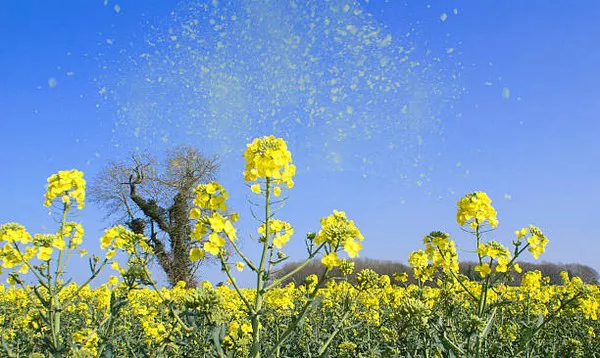As winter fades away and nature awakens, many individuals eagerly anticipate the arrival of spring. However, for some, the change in seasons brings with it a less desirable companion: allergies. Spring allergies, also known as seasonal allergic rhinitis, can turn the joy of springtime into a season of sneezes and sniffles. In this comprehensive guide, we delve into the science behind spring allergies, explore common triggers, and offer practical tips for managing symptoms and reducing exposure to allergens.
What are Allergies and How Do They Work? Unraveling the Mysteries of the Immune System
Understanding Allergies
Allergies are the result of an overactive immune response to substances that are normally harmless to most people, known as allergens. When the immune system encounters an allergen, it mistakenly identifies it as a threat and launches a defensive response, triggering symptoms such as sneezing, itching, and congestion.
The Immune System’s Role
The immune system plays a crucial role in defending the body against harmful pathogens and substances. When functioning correctly, it can distinguish between harmless substances and potential threats, mounting an appropriate response to protect the body. However, in individuals with allergies, the immune system becomes hypersensitive, reacting excessively to otherwise harmless allergens.
Response to Allergens
When an allergen enters the body, it triggers the production of antibodies, specifically immunoglobulin E (IgE), which bind to mast cells and basophils. Upon subsequent exposure to the allergen, these cells release inflammatory mediators such as histamine, leading to the classic symptoms of allergies, including sneezing, itching, and nasal congestion.
What are the Common Triggers for Spring Allergies? Navigating the Pollen Minefield
Pollen from Trees, Grasses, and Weeds
Pollen is one of the primary triggers for spring allergies, with trees, grasses, and weeds being the main culprits. Trees such as oak, birch, and maple release pollen in the spring, followed by grasses like ryegrass and timothy grass. Weeds such as ragweed and sagebrush also contribute to pollen levels, particularly in late summer and early fall.
Airborne Pollen
Pollen is dispersed through the air by wind, allowing it to travel long distances and reach individuals who may be miles away from the source. This airborne distribution makes pollen particularly difficult to avoid, as it can infiltrate indoor spaces and trigger allergy symptoms even in individuals who spend most of their time indoors.
Pollen Counts and Seasons
Pollen counts tend to be highest during the spring and fall months when trees, grasses, and weeds are in bloom. Warm, dry, windy days are ideal conditions for pollen dispersal, whereas rainy or humid weather can temporarily suppress pollen levels. Understanding seasonal patterns and local pollen forecasts can help individuals better prepare for allergy season and manage symptoms effectively.
Why Do Allergies Occur in Spring? Unraveling the Pollination Process
The Pollination Process
Spring allergies coincide with the pollination season, during which plants release pollen to fertilize other plants of the same species. Trees, grasses, and weeds produce pollen as part of their reproductive cycle, relying on wind, insects, or other animals to transport pollen grains from one plant to another.
Higher Pollen Counts
The abundance of flowering plants in spring leads to higher pollen counts in the air, increasing the likelihood of exposure for allergy sufferers. Additionally, certain weather conditions, such as warm temperatures and dry, windy days, can facilitate the dispersal of pollen over large distances, exacerbating allergy symptoms for sensitive individuals.
Geographic Variations
The timing and severity of spring allergies can vary depending on geographic location and local climate conditions. In regions with mild winters, spring may arrive earlier, leading to an extended allergy season. Conversely, in colder climates, allergy season may be shorter but more intense, as plants release pollen in a concentrated burst.
What are the Symptoms of Spring Allergies? Navigating the Allergy Minefield
Common Symptoms
Spring allergies can manifest in a variety of symptoms, ranging from mild to severe. Common symptoms include:
1. Sneezing
2. Runny or stuffy nose
3. Itchy, watery eyes
4. Scratchy throat
5. Coughing
6. Fatigue
7. Headache
These symptoms can significantly impact daily activities and quality of life, leading to decreased productivity, impaired sleep, and diminished overall well-being.
How Can Spring Allergies be Managed or Treated? Navigating the Path to Relief
Over-the-Counter Medications
Over-the-counter allergy medications such as antihistamines, decongestants, and nasal sprays can provide temporary relief from allergy symptoms. Antihistamines work by blocking the effects of histamine, reducing sneezing, itching, and runny nose, while decongestants help alleviate nasal congestion by shrinking swollen nasal passages.
Immunotherapy
Immunotherapy, also known as allergy shots or sublingual immunotherapy (under-the-tongue tablets), is a long-term treatment option for individuals with severe allergies who do not respond to other treatments. Immunotherapy works by gradually exposing the immune system to small amounts of allergen, helping to desensitize the body’s response and reduce allergic reactions over time.
Lifestyle Changes
Making lifestyle changes can also help manage spring allergies. These may include:
1. Avoiding outdoor activities during high pollen count days
2. Keeping windows closed and using air conditioning to filter indoor air
3. Using a high-efficiency particulate air (HEPA) filter in the home
4. Showering and changing clothes after spending time outdoors to remove pollen from the body
5. Wearing sunglasses to protect the eyes from pollen
6. Avoiding hanging laundry outside to dry during allergy season
Tips for Reducing Exposure to Pollen: Navigating the Pollen Minefield
Stay Indoors on High Pollen Count Days
Check local pollen forecasts and stay indoors on days when pollen counts are high, particularly during peak pollen hours, which are usually in the early morning and late afternoon.
Use Air Purifiers
Invest in a high-quality air purifier with a HEPA filter to remove pollen and other allergens from indoor air. Place the purifier in commonly used areas such as the bedroom or living room for maximum effectiveness.
Wear Masks Outdoors
When spending time outdoors during allergy season, consider wearing a mask or respirator to reduce exposure to pollen particles. Opt for masks labeled N95 or N99, which can filter out small particles effectively.
Close Windows and Doors
Keep windows and doors closed during allergy season to prevent pollen from entering indoor spaces. Use air conditioning instead to circulate and filter indoor air.
Shower and Change Clothes
After spending time outdoors, shower and change clothes to remove pollen from the body and prevent it from being tracked indoors. This can help reduce allergy symptoms and minimize exposure to allergens.
Conclusion: Navigating the Pollen-Filled Path to Relief
Spring allergies may cast a shadow over the beauty of the season, but with knowledge and preparation, individuals can navigate the pollen-filled path to relief. By understanding the science behind allergies, recognizing common triggers, and implementing strategies to manage symptoms and reduce exposure to pollen, allergy sufferers can reclaim the joys of spring without the burden of allergy symptoms. Whether through medication, immunotherapy, or lifestyle changes, relief is within reach for those willing to take proactive steps towards a pollen-free future.
[inline_related_posts title=”You Might Be Interested In” title_align=”left” style=”list” number=”6″ align=”none” ids=”6838,6835,6832″ by=”categories” orderby=”rand” order=”DESC” hide_thumb=”no” thumb_right=”no” views=”no” date=”yes” grid_columns=”2″ post_type=”” tax=””]

































